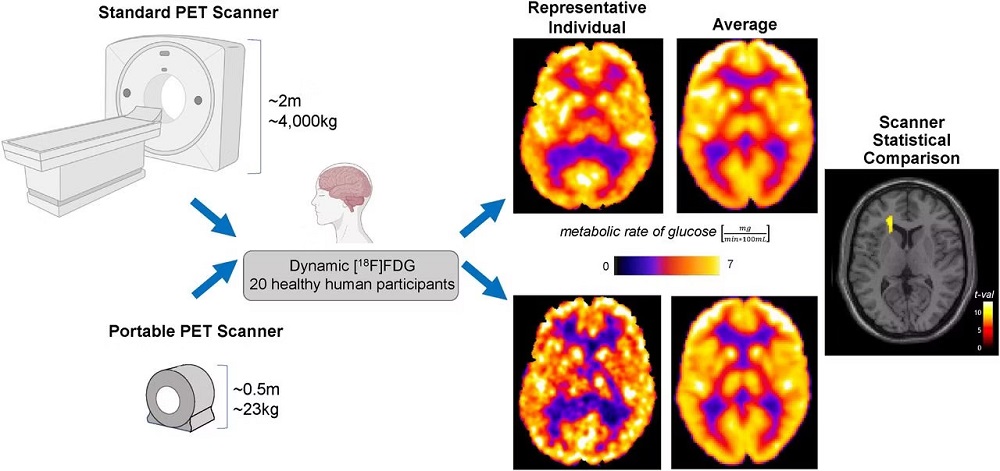Portable PET Scanner Demonstrates Feasibility In Humans
Posted on 08 Jan 2024
Current PET scanners require stationary patient positioning during the scan and are typically housed in larger medical facilities with the capacity to accommodate such technology. On the other hand, innovative portable PET scanners have been introduced, featuring adaptable configurations for seated or standing positions. These advanced scanners are poised for application in diverse environments, ranging from combat zones and sports arenas to intensive care units. Now, a new study has found that clinical brain imaging with a newly developed portable PET scanner is feasible in comparison to conventional PET imaging, revealing similar results in human subjects for the first time.
Researchers from the New York State Psychiatric Institute (New York, NY, USA) have been developing noninvasive approaches for estimating brain glucose metabolism using the new scanners. In this study, they aimed to establish the feasibility of the approach using an experimental scanner called CerePET from Brain Biosciences (Rockville, MD, USA). The study involved 20 healthy participants who underwent dynamic F-18 FDG imaging with both the traditional and portable scanners, with sessions ranging from one to 154 days apart. The team meticulously quantified standard radiotracer uptake values (SUV) and glucose metabolism rates (CMRglu) in brain tissues, comparing the data between the two scanner types at both regional and voxel levels.

The results indicated that the portable PET scanner adeptly measured brain metabolism based on F-18 FDG radiotracer uptake, closely mirroring the performance of standard PET scanners. Outcome measures exhibited robust correlation, with correlation coefficients between imaging sets across participants marked at 0.83 ± 0.07 for SUV and 0.85 ± 0.08 for CMRglu. Thus, this research suggests no discernible differences in fully quantified dynamic outcomes within cortical and subcortical brain areas when comparing the two scanners, thereby positioning the CerePET scanner as a viable option for imaging human subjects.
Related Links:
New York State Psychiatric Institute
Brain Biosciences














